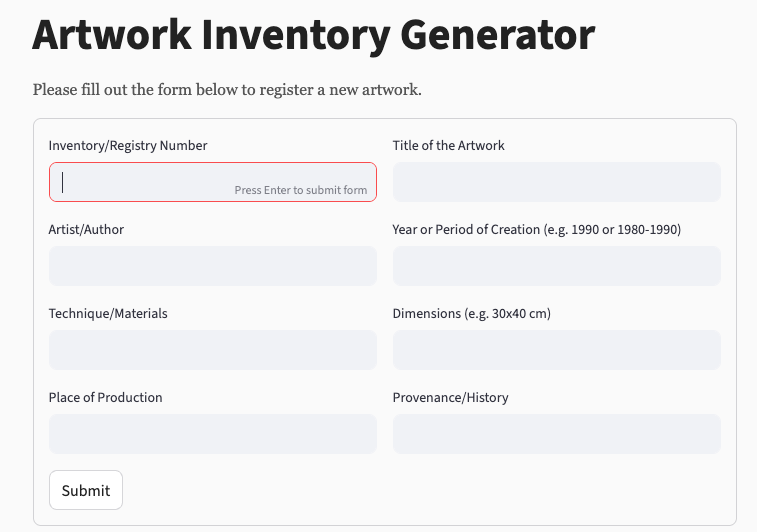Over the past few months, I’ve been dedicating time to learning the fundamentals of Python programming, with a particular focus on understanding how code can intersect with artistic practices, curatorial work, and collection management. As a beginner, this journey has been challenging and stimulating, a dive into the logic, structure, and creative possibilities that, not long ago, felt completely out of reach.
As part of this learning process, I developed a small program that works as an artwork inventory generator. The idea emerged from a recurring need I’ve observed in independent projects and academic contexts: the lack of simple, accessible, and customizable tools to organize information about art collections, particularly in settings that don’t rely on robust institutional systems.
Using the Streamlit framework, which turns Python scripts into interactive web apps, I was able to create a basic interface where users can:
- Register artworks with key fields such as title, author, technique, dimensions, provenance, and place of production;
- Automatically validate some entries to ensure consistency in the records.
- Generate a downloadable CSV inventory, ready to be used in spreadsheets or databases.
A Simple but Meaningful Project
This is, of course, a simple project. But for me, it marks an important milestone in learning how programming can support research, documentation, and curatorial practices. Writing this small piece of code raised questions about data structures, usability, input validation, and, most of all, how to translate a practical need from the world of art into computational logic.
The tool was designed to be open and experimental. The full code is available on my GitHub repository for anyone who might want to reuse, adapt, or improve it. I would love to hear feedback and collaborate, especially with others who, like me, are navigating the intersection of art and technology.
I hope this small experiment can be useful to artists, researchers, students, and institutions looking for a lightweight and practical solution to begin organizing their collections.

